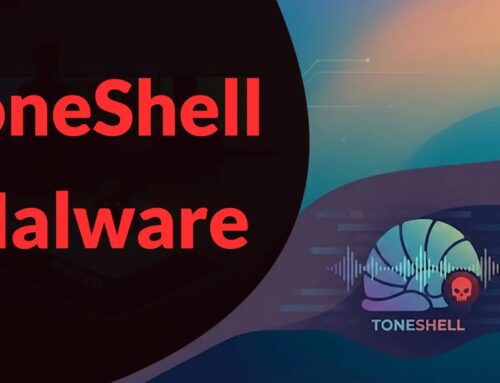
Researchers Uncover Hidden Connections Between Ransomware Groups and Relationships Between Them
The landscape of cybercrime is shifting, and with it, our understanding of the adversary. For years, cybersecurity professionals have largely viewed ransomware groups as siloed operations, each with its own distinct methodologies and targets. New research, however, reveals a more intricate and concerning reality: a sophisticated, interconnected ecosystem where ransomware operators collaborate, share resources, and even trade expertise. This evolution demands a fundamental reevaluation of our defensive strategies.
The Evolving Face of Ransomware Operations
Recent investigations have brought to light a complex web of hidden alliances among prominent ransomware operations. Groups once perceived as fiercely independent—names like Conti, LockBit, and Evil Corp—are now understood to be participants in a dynamic, underground marketplace. This transformation signifies a departure from the traditional, isolated criminal enterprise model.
The acceleration of this trend can be attributed to several factors, primarily the increasing professionalization of cybercrime. Ransomware-as-a-Service (RaaS) models have lowered the barrier to entry, allowing less technically skilled affiliates to deploy sophisticated attacks. This has fostered a dependency and intricate collaboration network that resembles legitimate business partnerships.
Interconnections: A Marketplace of Malice
The core finding from these new insights is the fluidity with which crucial operational components are exchanged across different ransomware factions. This includes:
- Code Sharing and Development: Malicious code, including exploits and encryption routines, is often repurposed or sold between groups. This allows individual operations to rapidly integrate new capabilities without extensive R&D.
- Infrastructure Pooling: Shared infrastructure, such as command-and-control (C2) servers, payment processing platforms, and even initial access brokers, provides resilience and efficiency for these criminal networks.
- Human Capital and Expertise: Skilled individuals, whether exploit developers, seasoned negotiators, or cryptocurrency experts, may work across multiple groups, lending their specialized knowledge to various campaigns. This talent mobility enhances the overall sophistication and effectiveness of attacks.
This networked approach grants ransomware groups significant advantages. It allows for economies of scale, rapid innovation through shared intelligence, and increased resilience against law enforcement efforts. When one group is disrupted, its components or members can quickly resurface within another, making comprehensive takedowns far more challenging.
Shifting Perceptions and Strategic Implications
Understanding these hidden connections fundamentally alters how cybersecurity defenders must approach the threat. Treating each ransomware incident as an isolated event is no longer sufficient. Instead, a more holistic and intelligence-driven approach is required.
- Threat Intelligence Enhancement: Security teams must prioritize intelligence feeds that track not just individual group activities but also the broader criminal ecosystem and potential inter-group collaborations. Understanding these relationships can help predict future attack vectors or identify emerging threats.
- Proactive Defense Strategies: Defenses should be designed to counter common tactics, techniques, and procedures (TTPs) that may be shared across multiple groups, rather than focusing solely on signatures specific to a single variant.
- International Collaboration: Law enforcement and cybersecurity agencies must intensify international collaboration to dismantle these interconnected criminal networks, rather than focusing on singular entities.
Remediation Actions and Mitigating Risk
In light of these discoveries, organizations must reinforce their defenses and adopt a proactive stance against a more unified adversary. Here are critical remediation actions:
- Strong Endpoint Detection and Response (EDR): Implement robust EDR solutions capable of detecting anomalous behavior and lateral movement, which are common TTPs across ransomware variants.
- Regular Backups with Offline Storage: Maintain immutable, offline backups of all critical data. This is the last line of defense against successful ransomware encryption. Test restoration procedures regularly.
- Network Segmentation: Isolate critical systems and data with strict network segmentation. This limits an attacker’s ability to move laterally and compromise the entire network.
- Patch Management: Apply security patches promptly to operating systems, applications, and network devices. Ransomware often exploits known vulnerabilities, such as those that might be linked to, for example, CVE-2023-46805 or CVE-2023-46806, which have been exploited by various threat actors.
- Employee Training: Conduct regular security awareness training to educate employees about phishing, social engineering, and safe browsing practices. Human error remains a significant initial compromise vector.
- Multi-Factor Authentication (MFA): Enforce MFA for all accounts, especially for remote access, privileged accounts, and critical business applications.
- Incident Response Plan: Develop and regularly test a comprehensive incident response plan specifically for ransomware attacks. This should include communication protocols, containment strategies, and recovery procedures.
Conclusion
The revelation of hidden connections and collaborative relationships among ransomware groups marks a pivotal moment in understanding the modern cyber threat landscape. These groups are not isolated actors but components of a complex, adaptive ecosystem. For defenders, this necessitates a more sophisticated, intelligence-driven, and collaborative approach to cybersecurity. By acknowledging this interconnectedness and adapting our strategies, we can begin to build more resilient defenses against this evolving threat.





